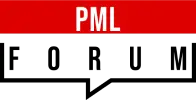When looking to buy optic equipment for your firearm, chances are you’ll come across terms like red dots and holographic sights a lot. You might wonder what the difference between the two is and how to decide which one is best for you.
You came to the right place. In this article, we will examine both optics in detail and explain how each operates and what advantages they have, one over the other.
They are both sighting mechanisms for weapons, but this is where their similarity stops.
What is a red dot sight and how does it work?
Invented in the mid-70s, a red dot is a 1x optic mostly used for close and moderate shooting ranges. It does not offer built-in magnification features. This is why the red dot is not referred to as scope but optic.
It operates on simple mechanical principles. It has a built-in lens with a special coating that only reflects red light. When an LED light hits this lens, the reticle reflects off and into a shooter’s eye. This creates an illusion of the reticle overlapping with the target.
The size of the dot in red dot optics is measured in minutes of angle (MOA). We can distinguish three main dot sizes.
What is a holographic sight and how does it work?
A holographic sight relies on more complicated technology. It uses laser-based holographic tech and can produce a reticle image that is either two-dimensional or three-dimensional.
A holographic sight enables the shooter to view a reticle image located at a distance.
It uses a non-magnifying gunsight laser-transmission hologram. This allows the shooter to see through the optical viewing window. It creates a visible red laser in the reticle mode and frames it on the prism.
What advantages do red dot and holographic sights have over one another?
When it comes to the advantages that red dot sight has over the holographic sight, we can single out these four:
Price
The difference in price between the two sights is so large that even the cost of the most expensive red dot sight will only just reach the cost of the cheapest holographic sight.
Battery life
The battery duration of red dot sights is measured in thousands, and sometimes even tens of thousands of working hours. At the same time, a holographic sight battery can endure between 500 and 1,000 working hours.
Size and weight
Because red dot sights don’t require a plethora of additional parts, they are lighter and smaller.
On the other hand, holographic sights need larger housings to hold delicate pieces of technology. This is why they are also less robust than the red dot sights.
Selection
Red dot sights come in a wide range of sizes and are produced by many manufacturing companies. In shooting supplies shops like Natchez, you can find a red dot sight for almost any firearm.
Currently, only two companies produce true holographic sights. Even though they offer several models, you still can’t expect to have a wide range of options when buying these sights.
A holographic sight will have the following four advantages over a red dot sight:
Focus
Holographic sights can maintain their sharpness and clarity in focus no matter how far your target is. Red dot sights can get blurry edges at increased ranges and this can interfere with your level of accuracy.
Reticle size
The red dot on a holographic sight reticle can be as tiny as 1 MOA. This means that at a 100-yards range, 1 MOA covers a 1-inch portion of the target. A small, sharp dot can contribute to a higher level of accuracy.
At the same time, the smallest red dot reticle in the red dot sights is 2 MOA, and a 2 MOA red dot covers 2 inches of the target at a 100 yards range. This means less accuracy at increased range targets.
Resilience
Because holographic sights don’t rely on an optical viewing glass to reflect the reticle to the shooter, they remain operable even if the glass is broken. This can be a major advantage over red dot sights if you find yourself in an extreme situation or conditions.
When it comes to the red dot sight, the front glass is its weakest spot. If broken, the red dot sight becomes unusable.
Target acquisition
Because a holographic sight produces sharper reticle images at increased ranges and can be used with both eyes open, it can tackle target acquisition faster and easier than a red dot sight.
Conclusion
When we add it all up, the score is even – 4 in favor of red dot sights and 4 in favor of holographic sights. What sight you should choose will depend on your needs. If you need a smaller, lighter sight at an affordable price, consider buying a red dot sight.
And if you prioritize faster target locking and resilience over the price, consider opting for a holographic sight.
We hope that our article helped you better understand the difference between the two sights and gave you enough information to decide which one is best for you.

